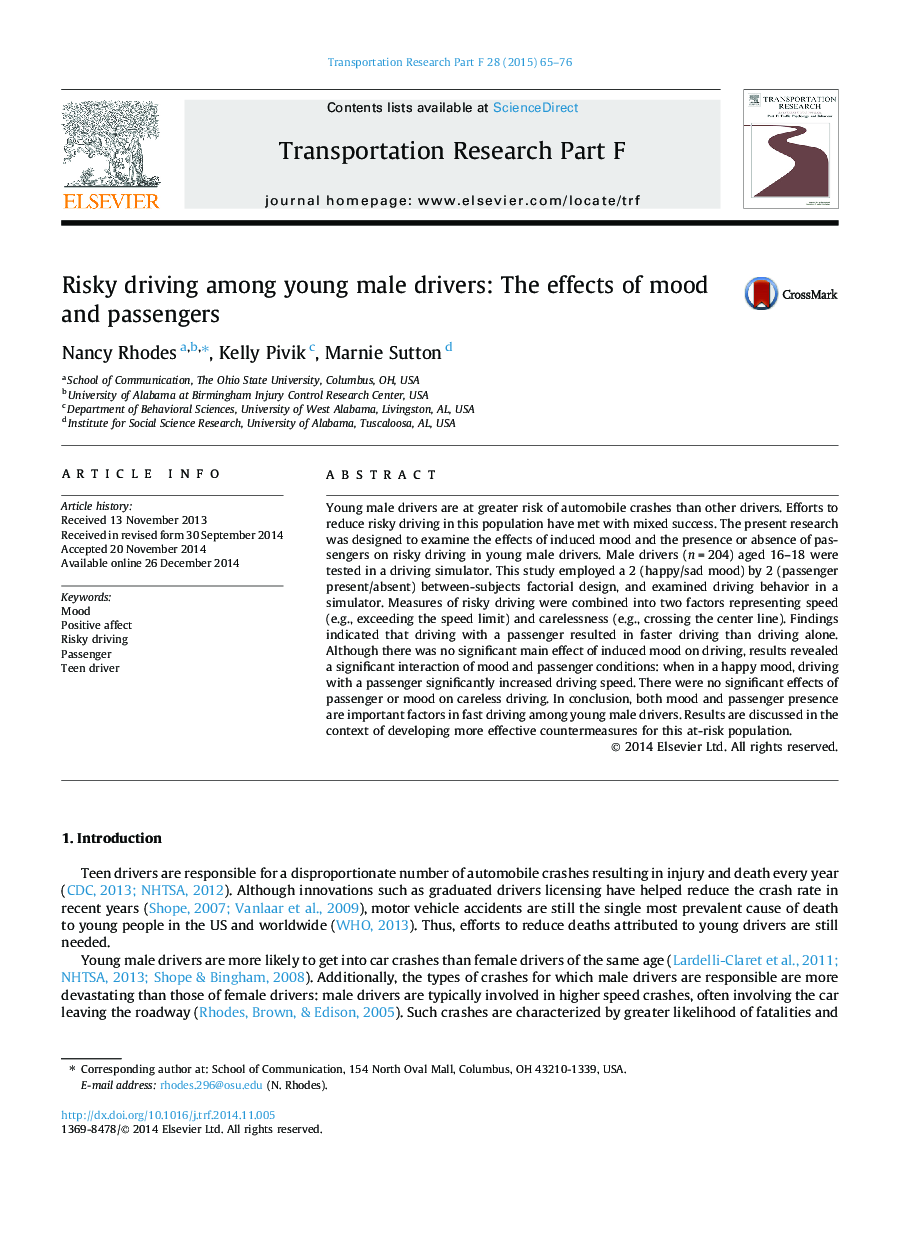| کد مقاله | کد نشریه | سال انتشار | مقاله انگلیسی | نسخه تمام متن |
|---|---|---|---|---|
| 897730 | 1472455 | 2015 | 12 صفحه PDF | دانلود رایگان |
• Young males drove in a simulator alone or with a friend and in a sad or happy mood.
• Driving with a friend in the simulator increased driving speed.
• Drivers in a happy mood with a passenger present engaged in the fastest driving.
• Recommend passenger restrictions and training/education for young drivers.
Young male drivers are at greater risk of automobile crashes than other drivers. Efforts to reduce risky driving in this population have met with mixed success. The present research was designed to examine the effects of induced mood and the presence or absence of passengers on risky driving in young male drivers. Male drivers (n = 204) aged 16–18 were tested in a driving simulator. This study employed a 2 (happy/sad mood) by 2 (passenger present/absent) between-subjects factorial design, and examined driving behavior in a simulator. Measures of risky driving were combined into two factors representing speed (e.g., exceeding the speed limit) and carelessness (e.g., crossing the center line). Findings indicated that driving with a passenger resulted in faster driving than driving alone. Although there was no significant main effect of induced mood on driving, results revealed a significant interaction of mood and passenger conditions: when in a happy mood, driving with a passenger significantly increased driving speed. There were no significant effects of passenger or mood on careless driving. In conclusion, both mood and passenger presence are important factors in fast driving among young male drivers. Results are discussed in the context of developing more effective countermeasures for this at-risk population.
Journal: Transportation Research Part F: Traffic Psychology and Behaviour - Volume 28, January 2015, Pages 65–76
